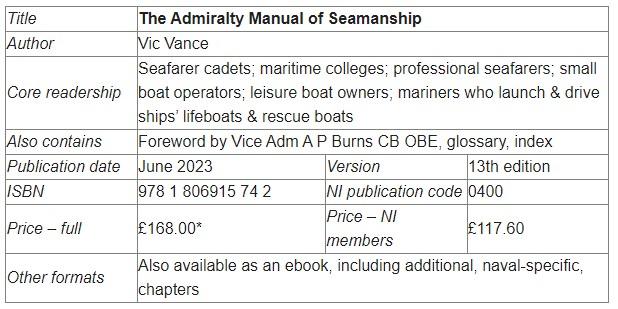NI publishes updated Admiralty Manual of Seamanship
This comprehensive work sets out sound seamanship principles and practices developed over many years by Britain’s Royal Navy.
The Nautical Institute’s longstanding co-operation with Britain’s Royal Navy continues with the release this month of the latest edition of The Admiralty Manual of Seamanship. There have been concerns for some time in the maritime world that safety is being compromised through the loss of traditional seamanship skills. The 13th edition of this comprehensive work aims to redress the balance. It sets out sound seamanship principles and practices that have been developed over many years. Published jointly by the Royal Navy and The Nautical Institute, The Admiralty Manual of Seamanship is recognised as the leading publication on the subject and has been thoroughly updated for today’s seafarers. In his foreword, Vice Admiral A P Burns emphasises: “We must never slacken seamanship standards, nor ignore the hard lessons of living and working at sea learned over hundreds of years of experience… I expect all my sailors and officers, whatever your branch or specialisation, to understand good seamanship.” Subjects covered include maritime terminology; mooring, anchors, cables and buoys; rigging, cranes, derricks and deck gear; towing by tugs and other vessels; boat launch, recovery and handling; water safety, LSAs, MOB rescue and recovery. The sections on ships dragging anchor, HPMT mooring equipment, pilot ladders and emergency towing systems are among those that have undergone major ‘refits’ since the previous edition of 2015. The printed volume is accompanied by an ebook (available from the NI online bookshop) that includes five additional chapters covering replenishment at sea; targets, decoys, markers and recoveries; seamanship organisation and upkeep; helmsmanship; and tactical communications. The straightforward style of writing, the unfussy layout, clear colour diagrams and the comprehensive glossary and index make the book a pleasure to read and refer to. As Vice Adm Burns says in his concluding remarks, the book “is also an interesting and informative read for everyone in uniform, from the most inexperienced young recruit through to the most experienced sea Captains”.

